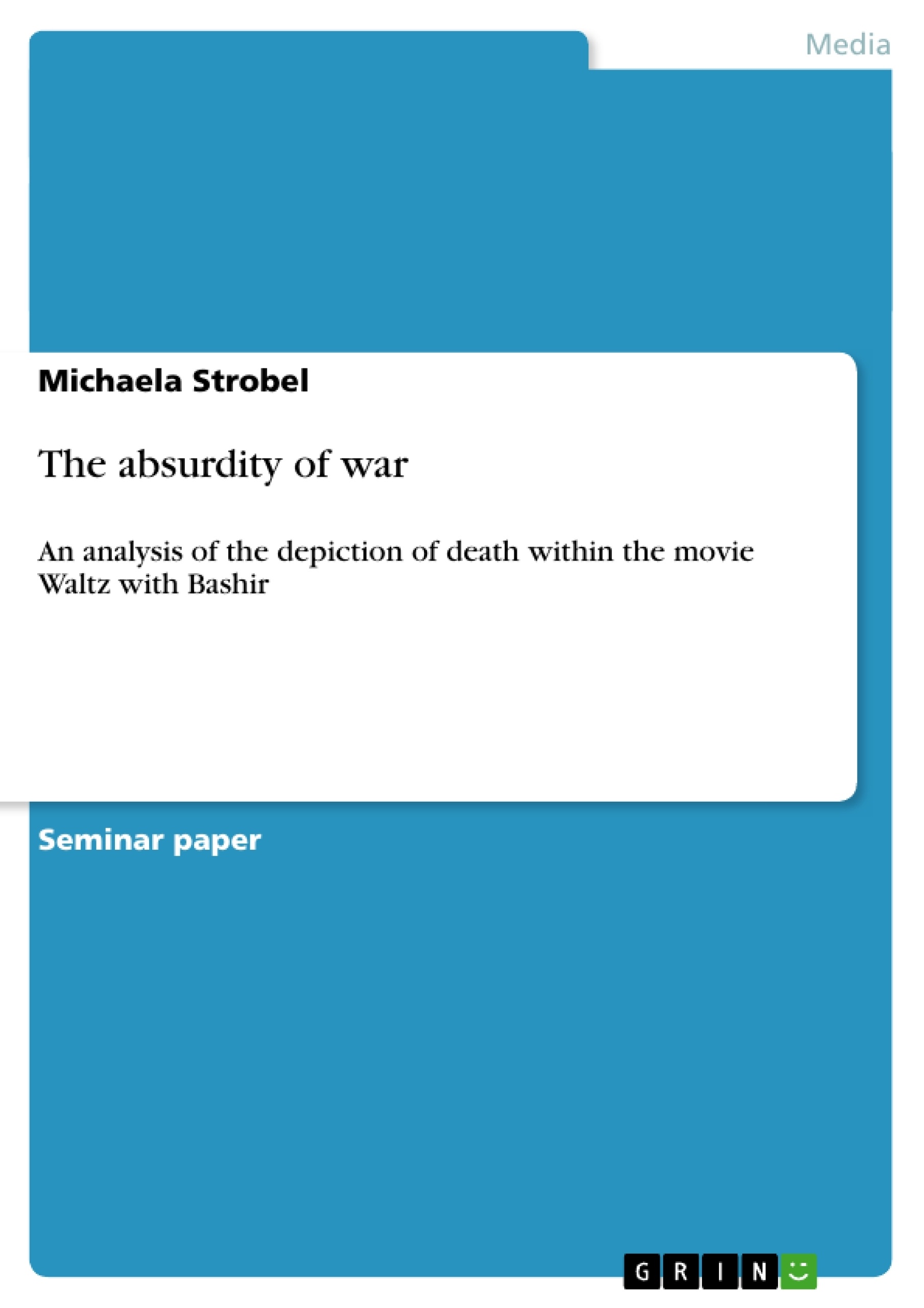1 Introduction ......................................................................... 2
2 Involvement and detachment ........................................................... 4
3 Escapism ............................................................................. 5
4 Symbolic death........................................................................ 6
5 Real death.............................................................................8
Bibliography
----
How authentic can an animation movie be? “Documenting the undocumentable” (Nichols, 1991, p. 57) is a philosophical as well as a technical challenge and the lack of a ‘scientific’ basis to memory might make it difficult to categorize WWB as a documentary in the first place altogether (DelGaudio, 1997, p. 190; Pinzon, 2009, p. 10). On the other hand, since their beginning, scholars have already examined it under various viewpoints, mainly dealing with questions of authenticity (e.g. DelGaudio, 1997) and memory (e.g. Landesmann & Bendor, 2011).
3 documentaries have been used to illustrate abstract concepts (DelGaudio, 1997). To mould those concepts into something comprehendible the creators of this movie (Folman, 2008) could not imagine any other way than using the skills of an animation artist to make the audience understand (Sofian, 2005, p. 9)4
Combining intangible memories and dreams with classical journalistic methods like talking heads (Saunders, 2012, p. 13), Ari Folman exploits the boundless opportunities of animation and documentary. As his film is purely created from scratch, he has in addition feature film elements at his hand like sound/music and colour/light to underline the meaning (Folman, 2008). The outstanding use of colours, sound and perspective becomes clear when watching the movie. But the message Ari Folman wants to get across isn’t always that self-evident when seeing WWB for the first time.
(...)
Inhaltsverzeichnis (Table of Contents)
- Introduction
- Involvement and detachment
- Escapism
- Symbolic death
- Real death
Zielsetzung und Themenschwerpunkte (Objectives and Key Themes)
This research paper analyzes the portrayal of death in the animated documentary "Waltz with Bashir" (WWB), employing the statement "death stories are less about the dead than about the living" as a starting point. The paper examines how WWB, through its depiction of death, explores the experiences and memories of war, particularly focusing on the absurdity and horrors of conflict. It delves into the director's use of animation as a means of engaging viewers in a unique way and questioning the boundaries between memory, reality, and dreams.
- The use of animation in a documentary context to depict war and death
- The interplay between memory, reality, and dreams in the narrative of WWB
- The exploration of the absurdity and senselessness of war through the portrayal of death
- The impact of war on the individuals involved, both perpetrators and victims
- The role of documentary filmmaking in raising awareness and promoting understanding of war and its consequences
Zusammenfassung der Kapitel (Chapter Summaries)
The introduction sets the stage for the paper by outlining the central theme of death in war narratives and introduces the focus on "Waltz with Bashir" as a prime example of how death is depicted in a documentary context. It highlights the film's unique blend of animation, memory, and reality, questioning the authenticity and purpose of the documentary format.
The chapter "Involvement and detachment" analyzes how the film uses animation to engage the audience in the narrative, exploring the techniques employed to evoke emotional responses. It discusses the tension between involving the viewer in the personal experiences of the characters and maintaining a sense of detachment, allowing for critical reflection on the horrors of war. It also examines how the film employs various cinematic techniques, such as camera perspectives, sound, and music, to control the audience's emotional engagement.
Schlüsselwörter (Keywords)
This research paper focuses on the themes of war, death, memory, animation, documentary filmmaking, and the absurdity of war. Key terms include "Waltz with Bashir," "animated documentary," "authenticity," "involvement and detachment," "memory and reality," "emotional engagement," and "compassion fatigue." It explores the intersections of these concepts to analyze the impact of war on individuals and society.
- Quote paper
- Michaela Strobel (Author), 2013, The absurdity of war, Munich, GRIN Verlag, https://www.grin.com/document/208053



